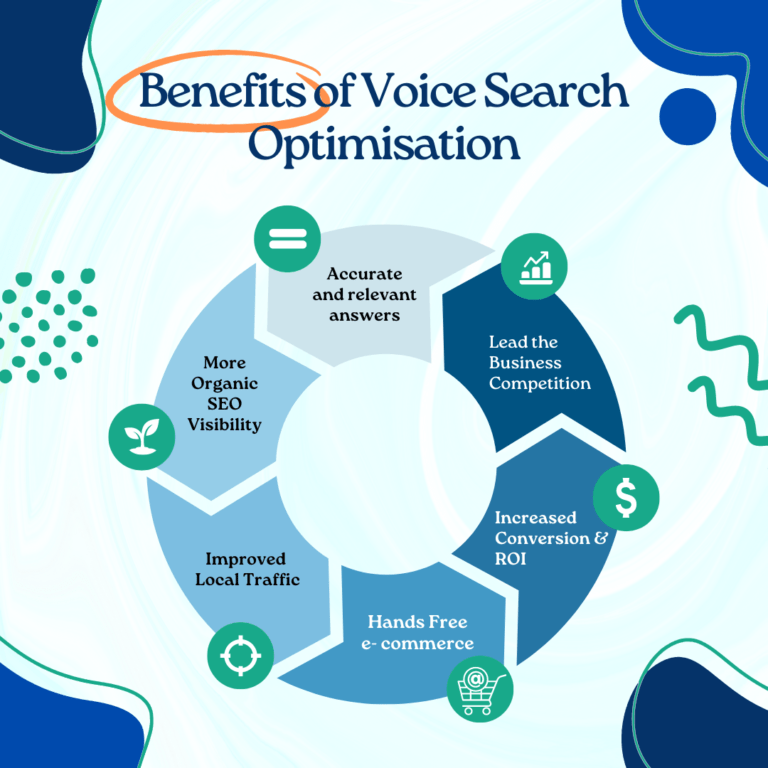Have you ever imagined that the world would be so hands-free? Personally, my gadgets have evolved from tactile keypad systems to qwerty keyboards and now to voice-search-enabled devices. Voice search refers to the practise of using voice keywords and phrases to search the internet through virtual assistants, such as smartphones, smart speakers, and other virtual assistants. What I expect from the voice search-enabled devices is better speech recognition capability, an accurate response, a faster response time, and, of course, affordability. However, making these devices smart is not a hard but challenging task. To make your content compatible with voice queries, you must perform Voice Search Optimisation.

Voice Search Optimisation offers new opportunities for reaching and engaging your target audience, but it also requires a different approach than traditional campaigns. If you want to avoid wasting money and losing customers, you need to avoid these common voice search mistakes and learn how to optimise your ads for these platforms.
Ignoring mobile friendliness
- As per the latest survey, more than 50% of smartphone owners use voice search. If your site is not well optimised for mobile, users will move away from it, leading to higher bounce rates. So you need to make sure your landing pages are responsive, fast, and clear.
- Tip no:1 Use a simple layout, large fonts, and accessible calls to action like call-only Ads. Test your pages on different devices and make sure they work well on all screen sizes.
Neglecting sEO
- When the assistant says, “Here are a few options,” and it leaves you in the SERP. So what does that mean? If you are not in the top 10, you will never be seen or heard. Additionally, it is proven that web sites that take longer to open are neglected by search engines.
- Tip no. 2 If you want to be heard in voice search, you must put your website on Google’s first page. So your best bet is to double down on your SEO efforts, including backlinks, user experience, local search, etc.
Using Academic Language
- Did you know that the average Google voice search result is written at a 9th-grade level? Voice search queries are different from text-based queries in several ways. People express their needs in their natural language, which is longer, conversational, and specific. So stay away from academic language.
- Tip No. 3 Simple language mimicking real-life conversations; literally long-tail keywords work best here.
Not having an FAQ Page
- Voice search results tend to prioritise answers to questions over general information. So if you have an FAQ page, you have already done most of the work. It is observed that an FAQ-style format helps Google extract the content from your website and display it as a result that the user is expecting. Content creators should make sure that the content is accurate and relevant to voice search queries.
Tip no. 4 Use full phrases and questions that are normally used to match the way people naturally speak, such as, “What is the maximum speed of a Bugatti?”
Overlooking Rich Snippets
- According to research, about 40% of voice search answers come from these featured snippets. The answer is simple. Google considers it the #0 search result, and this drives maximum web traffic. It is read aloud by Google, and if your content is voice-search optimised, it can potentially rank at #0.
- Tip no. 5 Google can show rich results or snippets if you add structured data to your site. Structured data is a piece of code in a specific format, written in such a way that search engines understand it. Search engines read the code and use it to create rich results.
Not measuring results
- Data is the new oil. We can’t keep things running if there is no reliable data about your past performance. Without tracking your performance and understanding your customers search patterns, you will not know what works and what doesn’t. With proper informatics in place, you can optimise your campaigns accordingly.
- For example. Have you ever noticed these devices did not recognise the speech when someone else tried? It can be due to a change in the conversation’s tone or voice. So device personalization for individual voices is a necessity in Voice Search Optimisation.
- Tip no. 6 Use the right tools and metrics to track your voice search performance. You can use Google Analytics and Google Search Console to monitor traffic, conversions, and ROI.
Wrapping Up
Siri, Alexa, and the Google assistant are no longer strangers to us; they have indeed become family. From playing music to handling the connected appliances in your house to answering your voice queries, these virtual assistants make tasks easier.
Critics argue that Voice Search Optimisation is irrelevant because voice searches are turned into text-based searches before submission, which makes them no different than desktop or mobile searches. But it is not true in reality.Google algorithm works to make eveerything easier to the general population. So do you believe Google does not take voice search into account.
The potential importance of voice SEO will rise with the increased use of voice searching. If you focus on how each device is used, you can better tailor your content to each type of audience you want to reach. The content must be optimised properly to acquire the top spot and be read aloud by the search engines. In this way, you can make your website more voice search-friendly, and it will be able to get a better ranking in voice search results.
To avoid missing out on voice search traffic, you need to optimise your campaigns for voice search. Our goal is to make sure your website is ready to meet your voice-searching audience where they are. Stay connected.